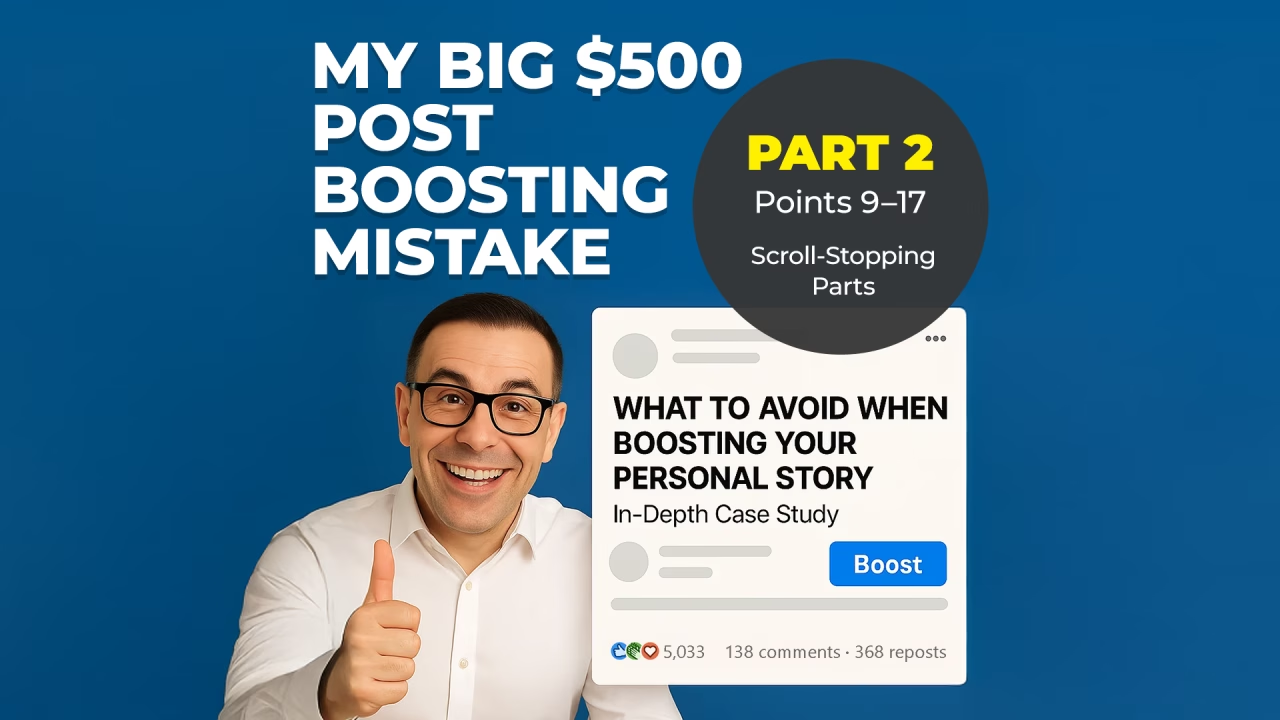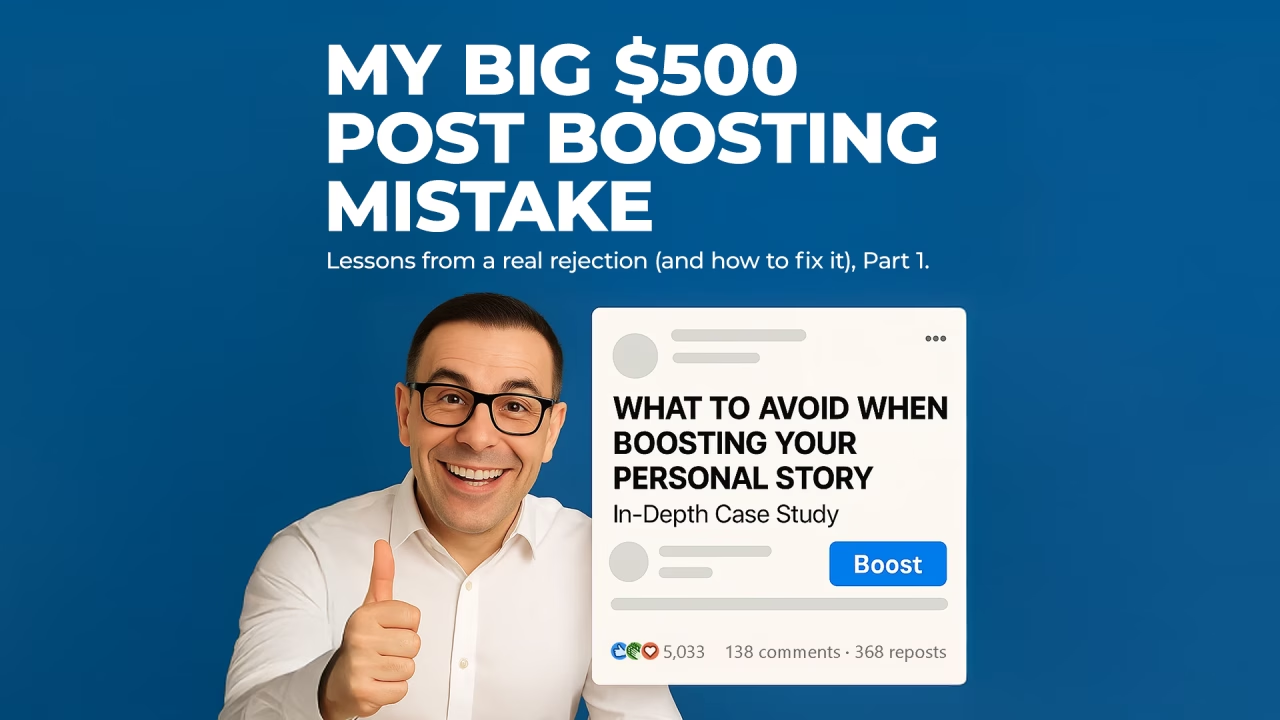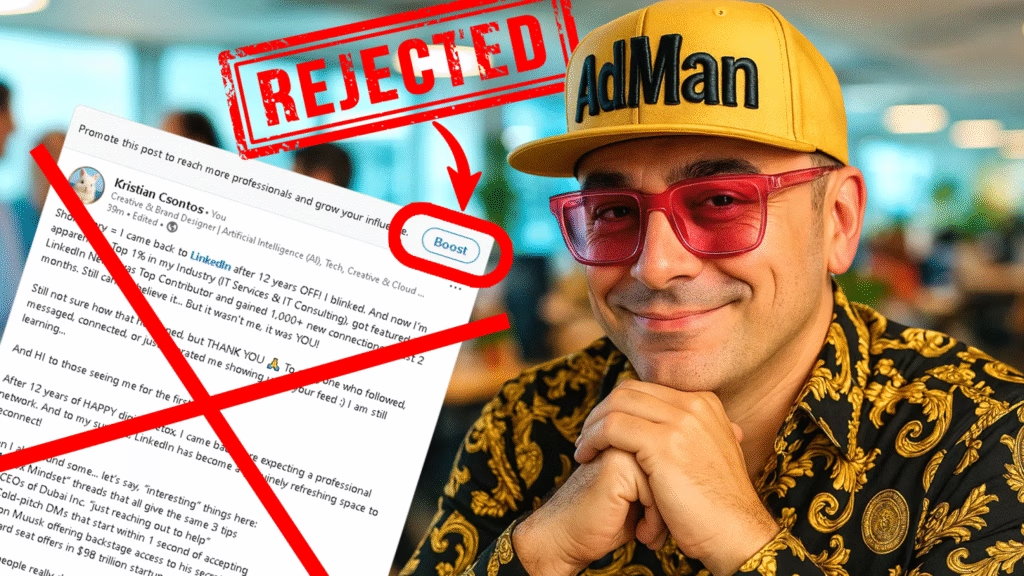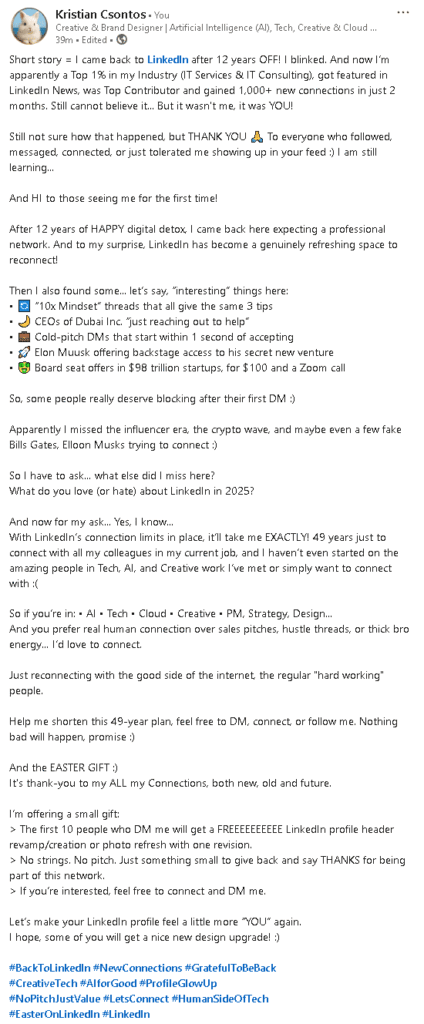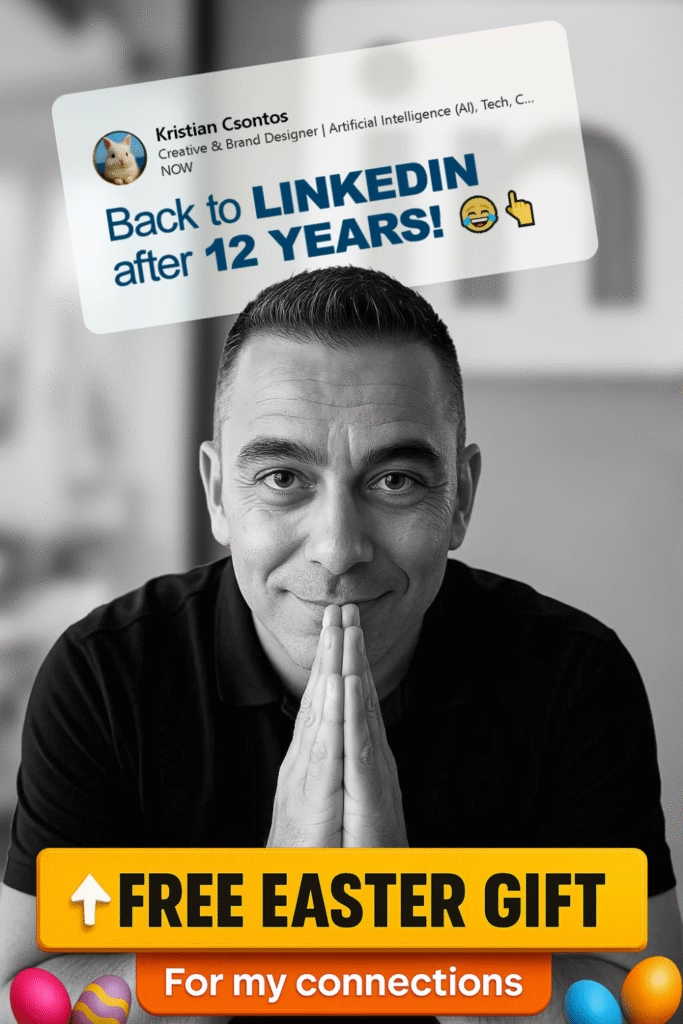Welcome to Part 2 of my personal LinkedIn experiment! If you haven’t read Part 1, I suggest starting there to catch up on the initial steps of my journey. In this continuation, I’ll share more insights and avoid mistakes that cost me time and money. Whether you’re new to LinkedIn or trying to enhance your post boosting strategy, these lessons are invaluable.
Background and Context
Let me give you a bit of background. I began my career in the print and publishing industry when the internet was still in its infancy. As the digital age progressed, I transitioned into online advertising, focusing on PPC campaigns and data-driven strategies on platforms like Google Ads. However, social media, especially platforms like Instagram and TikTok, were uncharted territories for me.
Returning to the social media world, I’ve been learning and adapting. Creating content that resonates on LinkedIn requires an understanding of the platform’s specific nuances. Now, let’s dive into the advanced rules I’ve learned for boosting posts on LinkedIn.
Advanced Rules & Insights for LinkedIn Posts
9. Avoid Diary-Style Posts
LinkedIn is a professional platform. While personal stories can engage, they need a professional tone.
- Don’t: Write like it’s your personal journal. Avoid excessive emotional sharing like, “I was so lost, and then I cried…”
- Do: Provide a takeaway. For instance, “I felt lost after my last job, but that break helped me discover my next goal.”
Ensure your stories have a professional arc, appealing to your audience in a meaningful way.
10. Clarify Value for the Reader
Your story should highlight why it matters to the reader.
- Do: Make lessons clear, e.g., “Here are 3 things I wish I knew when restarting my LinkedIn journey.”
- Don’t: End with just, “…and that’s my story.”
Every story needs a clear takeaway. LinkedIn values professionalism, even in storytelling.
11. Consider Your Visual Tone
Images are crucial for the post’s impact and review process.
- Don’t: Use overly dramatic imagery or influencer-style thumbnails.
- Do: Opt for clean, brand-aligned visuals. Use authentic photos or subtle overlays that reflect your professional brand.
LinkedIn favors visuals that align with professional standards.
12. Watch Out for “Gray Zone” Words
Certain words can cause your post to be scrutinized.
- Avoid terms like “Explode your reach” or “Guaranteed growth.”
- Use clear, truthful language instead of hype-driven promises.
13. Avoid Creating Fake Urgency
Traditional urgency tactics don’t work well on LinkedIn.
- Don’t: Use urgent appeals like, “Act now! This won’t last!”
- Do: Allow your content to be timely without pressure, e.g., “This was a big lesson for me this week — it might help you too.”
14. Balance Authenticity and Professionalism
There’s a fine line between being authentic and being too informal.
- Avoid slang or inside jokes that might not resonate with a wider audience.
- Maintain proper grammar and a professional tone, even in personal stories.
Think casual but well-edited.
15. Importance of Structure
Structure can make or break your post’s readability, especially on mobile.
- Do: Use short paragraphs and impactful one-liners. Avoid overly long blocks of text.
- Preview your post on mobile to ensure readability.
16. Language Settings Matter
Mismatch in language settings can cause rejections.
- Ensure your post language matches your campaign settings perfectly.
- Be cautious with mixed languages, emojis, or non-standard characters.
17. Adhere to Legal and Advertising Guidelines
Boosted posts are subject to advertising laws.
- Do not include content that makes assumptions about race, gender, age, or other protected characteristics.
- Avoid making financial promises like “Double your income in 30 days.”
- Do: Stick to content that complies with advertising regulations. Personal posts can be flagged if they appear to make bold claims.
Wrapping Up the Lessons Learned
These additional insights aim to prevent costly mistakes like the one I made. Following these guidelines can lead to more successful post boosts on LinkedIn.
What’s Next?
In the next part (coming soon), I’ll redesign the original rejected post according to these guidelines and attempt another boost. We’ll see if it passes and how it performs. To catch the next update, feel free to follow, and share this if you find it helpful.
Your Thoughts and Experiences
I’d love to hear from you:
- Have you ever had a post rejected on LinkedIn?
- What was the reason?
- Do you have any tips or tricks for passing LinkedIn’s review process?
Let’s learn from each other and share our knowledge. More updates will be coming soon!
